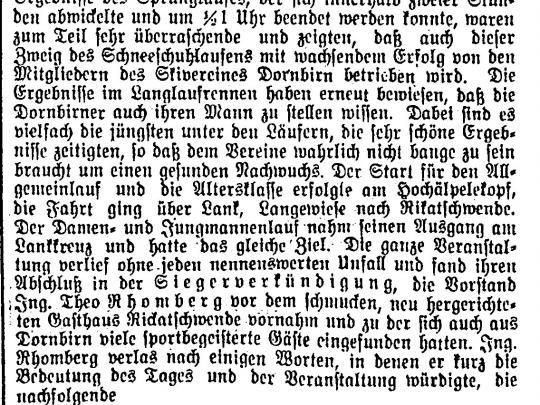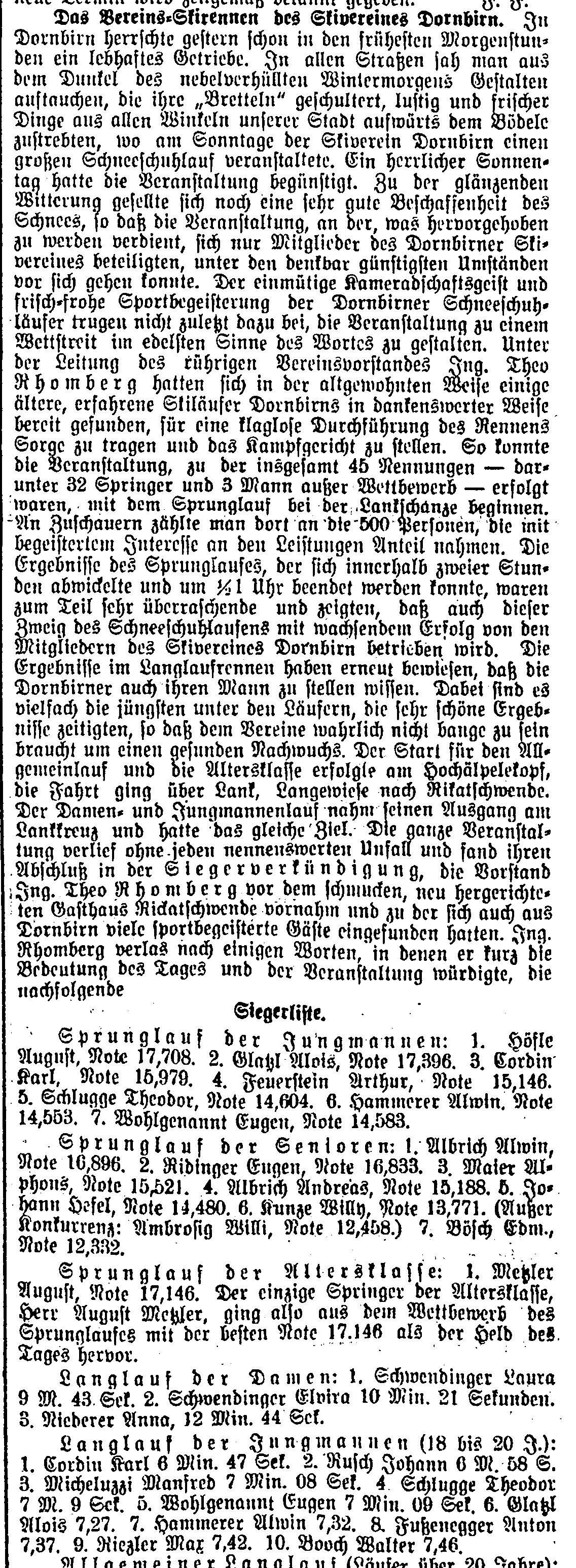Karl Cordin – “ski hero” from Bödele
During the inter-war years Bödele produced several local “ski champions” who went on to win recognition beyond the confines of Vorarlberg.
During the inter-war years Bödele produced several local “ski champions” who went on to win recognition beyond the confines of Vorarlberg, and whose feats are still remembered to this day. Whilst their sporting prowess found its rightful place in the annals of Vorarlberg sporting history, their participation in the Nazi movement has been conveniently forgotten.
The biography of Karl Cordin has been taken as an example of one such athlete who was part of the Nazi system. During the 1930s Cordin, who raced for the Dornbirn Ski Club, became one of the pin-ups of Vorarlberg ski sports, and was renowned in particular for ski jumping and cross-country events. Born in Dornbirn on 29th August 1912, he trained as a truck driver and qualified as a nationally accredited ski instructor. In 1935 he gave up his ski instructor and mountain guide qualifications and took up employment as a textile worker. Later on he once again worked as a mountain guide in the Kleinwalsertal. The young Cordin found his natural athletic and political home in the local gymnastics and ski club. Here Nazi ideology was propagated by the older members of the club.
In this way Cordin came into contact with Nazi ideology. In 1932 Cordin became a member of the SA and, after “Anschluss” entered service as a Hitler Youth (HJ) leader, before taking part in the HJ indoctrination courses in the German Reich. During the 1936 Winter Olympics the Vorarlberger gained his first national victories in ski jumping and cross-country skiing. At the Austrian Championships in Mallnitz in 1936 he won a bronze medal in the cross-country relay race and came second in the individual rankings for special ski jumping. However, Cordin was not supposed to have raced in the Garmisch-Partenkirchen Winter Olympics in February 1936. According to an interview with Cordin undertaken by the Vorarlberg author Laurin Peter in April 1997, he held the Heimwehrführer Toni Ulmer from Dornbirn responsible, asserting that Ulmer had approached the Austrian Athletics and Sporting Authority and prevented Cordin from participating. And to be fair, on account of the prevailing amateur status requirements Cordin was not entitled to take part.
Immediately after the “Anschluss” in March 1938 Cordin was made head of the Central Department for physical education in the HJ-Bann 573 Dornbirn. In this role in January 1939, together with other comrades, Cordin was appointed as a judge for the HJ-ski racing competitions. Later Cordin volunteered for the Gebirgsjäger-Kraftfahr-Ersatzabteilung 18 in Bregenz and was conscripted at the end of 1939. Six months before his first experience in action, Cordin competed in the 2nd class of the Friedrich-Wurnig ski jumping tournament on the Berg Isel jump in Innsbruck, which he won.
From June 1940 Cordin participated in the occupation of France with the Gebirgsjäger regiment 143 of the 6th Gebirgsjäger division and as a private, was awarded the Iron Cross 2nd Class. According to Ministry of Defence Archives, he was allocated to coastal defences on the Channel and Atlantic coasts of France from the end of Julyuntil the beginning of December 1941. After that he as sent back to work in the “Home Front war effort” and in 1941 participated with the Gebirgsjägers in the Greek campaign. In January 1942 Cordin was sent to Northern Finland to take part in hostilies on the Murmansk front, for which he was awarded the medal “Winter Campaign in the East 194/42) Now promoted to lance corporal, Cordin was involved in armed conflict in Northern Finland in May 1943.
In January 1944 he was sent back from the staff battalion of the Gebirgsjäger regiment 143 in Finland to the Gebirgsjäger Gebirgsjäger-Kraftfahr-Ersatzabteilung 18 in Bregenz, and was stationed with the Gebirgs-Panzerjäger in the vicinity of Hall in Tirol from the end of January 1945. After the war Cordin returned to Dornbirn, where he worked first as a farmhand and subsequently as a truck driver. In 1952 he acquired an old blacksmith’s business in St. Anton am Arlberg, and a former guest house dating back to the 12th century which he rebuilt, establishing the Hotel Nassereinerhof, which still belongs to the same family today.
Author: Andreas Praher
Dornbirn Municipal Archive


